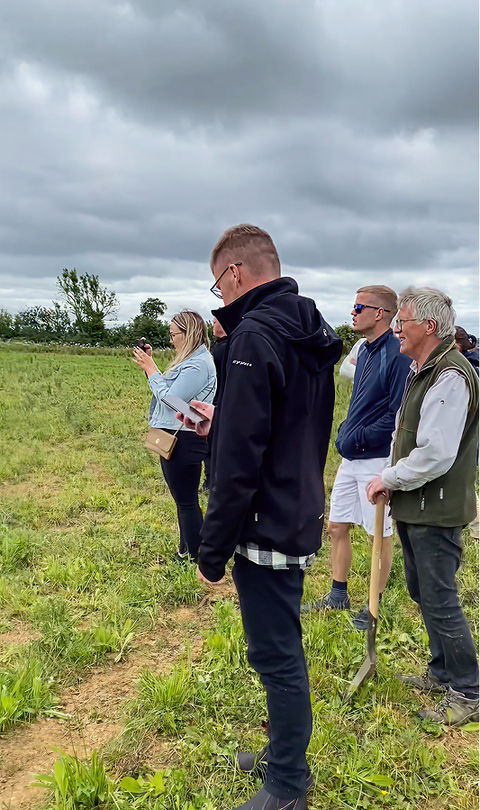Puutsa Farm in Estonia is a 350-hectare living classroom for rotational grazing. Run by Airi Külvet, they are working to increase the adoption of holistic management and change regulations that penalize farmers for following regenerative practices.
Their story
Estonia's Rotational Grazing Champion
Airi Külvet has become one of Estonia's leading advocates for rotational grazing, a practice that keeps cattle outdoors year-round instead of confining them to barns during winter months. At her 350-hectare Puutsa Farm, she has mastered techniques that allow 178 cattle to graze through Estonia's variable winters where snow comes and goes and temperatures vary. This approach delivers measurable results: increased organic matter, improved water retention and soil structure, enhanced microbial activity, and increased root depth across her entire operation.
“In Estonia, farmers are taught that animals should be let out to feed when the grass is 25-30 cm high. We’re told that if we let the grass grow high, we’re wasting feed,” Airi explains. “Regenerative agriculture looks at the bigger picture. It considers animal welfare and the nutritional value of the pasture grass as well as the long-term health of the environment and soil.”
This represents a complete shift from conventional Estonian farming where cattle spend winters in barns consuming expensive hay delivered by tractors. Airi's methods focus on strategic grazing management, ensuring half of each grazed area remains uneaten to improve soil fertility, using small paddocks with large numbers of animals for concentrated impact, implementing crucial rest periods for grass recovery, and moving animals every 1-3 days to optimize both animal health and pasture regeneration.
"At Puutsa, we follow the rhythms of nature,” Airi explains. “Some farmers would look at this grass and say it's overgrown and old, but in regenerative agriculture we see it differently. There is no fixed cycle of the exact number of days or height for grass growth. It varies from year to year and season to season. By understanding the landscape, animals, and plants, we get the most potential out of the land in a natural way.”
Fighting Regulatory Barriers
What makes Airi's work particularly challenging are the regulatory barriers in Estonia facing farmers who want to implement rotational grazing. The system is currently set up to support industrial methods, which Airi is working to change through education and advocacy. “Leaving buffer years for grassland and grazing land was not allowed in Estonia until now," she explains. "In some places there are problems with keeping animals outdoors in the winter, with officials and farmers considering it a mismanagement of animal welfare if cattle are in their natural environment rather than in a barn on concrete."
So far, Airi has organized conferences and invited speakers from the UK and elsewhere to demonstrate how rotational grazing can work in Estonian conditions. Through training days, ministry meetings, working groups, tours, events, workshops, social media, and podcasts, she shares knowledge that challenges conventional thinking about what constitutes proper animal care.
Spreading Practical Solutions
Airi's proudest achievement has been seeing rotational grazing spread to larger Estonian beef cattle farmers. "Soil restoration and animal health practices are spreading in Estonia," she says. "It is the larger and more successful herds that are trying it, using it, and sharing their experiences."
Airi's vision focuses on continuing to test grazing methods in Estonian conditions, working with grain farmers on no-till solutions and running training days for farmers and policy makers to improve regulations and laws so that they do not become a barrier to the implementation of regenerative farming practices.
Through patient demonstration and persistent education, Airi shows that change happens one farmer, one policy maker, and one regulation at a time. As she shares, “Farmers should not feel that everything they do is against the law." By championing farming solutions that have worked for millennia, she's fighting for a future where regenerative practices are supported, not penalized.
Farm facts
Farm located in
Estonia














